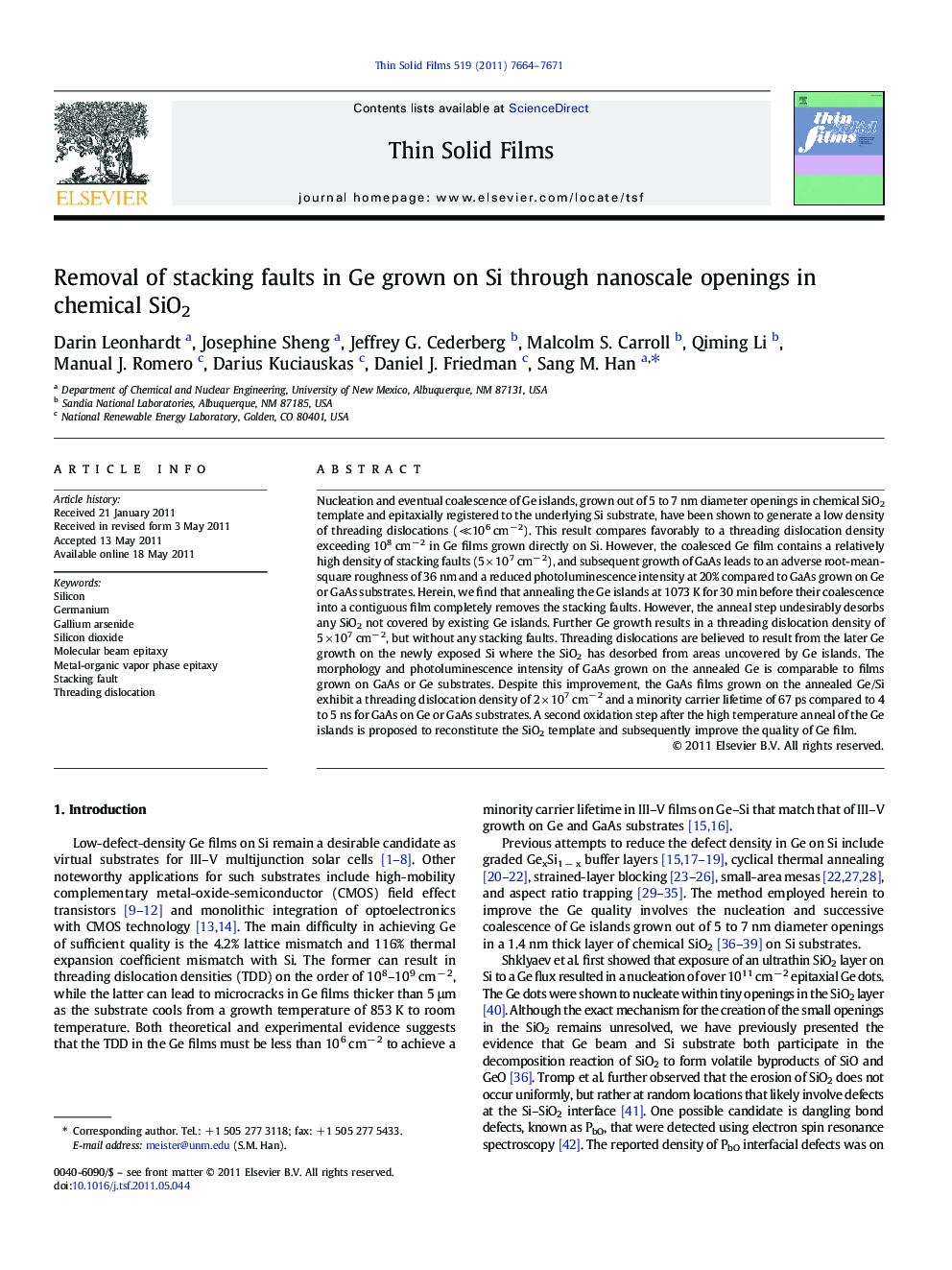| Article ID | Journal | Published Year | Pages | File Type |
|---|---|---|---|---|
| 1667760 | Thin Solid Films | 2011 | 8 Pages |
Nucleation and eventual coalescence of Ge islands, grown out of 5 to 7 nm diameter openings in chemical SiO2 template and epitaxially registered to the underlying Si substrate, have been shown to generate a low density of threading dislocations (≪106 cm− 2). This result compares favorably to a threading dislocation density exceeding 108 cm− 2 in Ge films grown directly on Si. However, the coalesced Ge film contains a relatively high density of stacking faults (5 × 107 cm− 2), and subsequent growth of GaAs leads to an adverse root-mean-square roughness of 36 nm and a reduced photoluminescence intensity at 20% compared to GaAs grown on Ge or GaAs substrates. Herein, we find that annealing the Ge islands at 1073 K for 30 min before their coalescence into a contiguous film completely removes the stacking faults. However, the anneal step undesirably desorbs any SiO2 not covered by existing Ge islands. Further Ge growth results in a threading dislocation density of 5 × 107 cm− 2, but without any stacking faults. Threading dislocations are believed to result from the later Ge growth on the newly exposed Si where the SiO2 has desorbed from areas uncovered by Ge islands. The morphology and photoluminescence intensity of GaAs grown on the annealed Ge is comparable to films grown on GaAs or Ge substrates. Despite this improvement, the GaAs films grown on the annealed Ge/Si exhibit a threading dislocation density of 2 × 107 cm− 2 and a minority carrier lifetime of 67 ps compared to 4 to 5 ns for GaAs on Ge or GaAs substrates. A second oxidation step after the high temperature anneal of the Ge islands is proposed to reconstitute the SiO2 template and subsequently improve the quality of Ge film.
